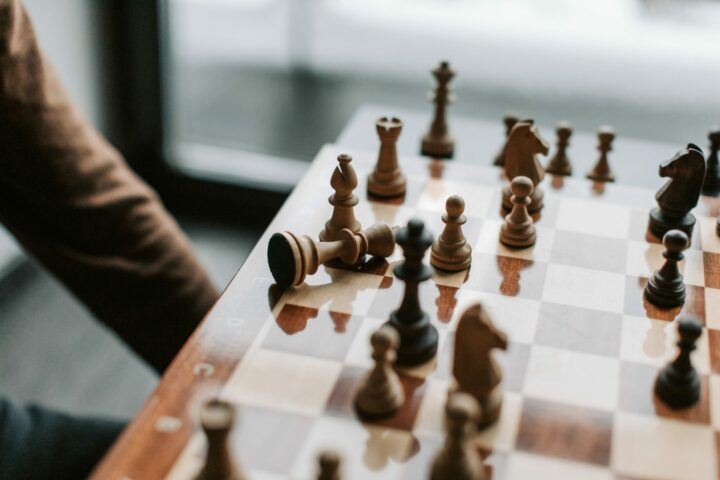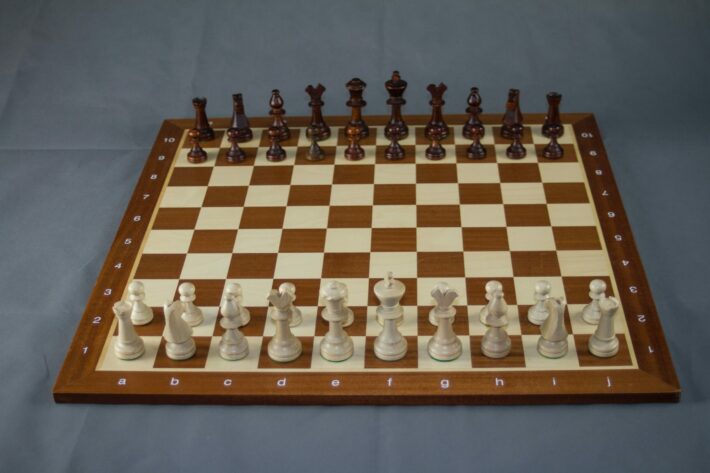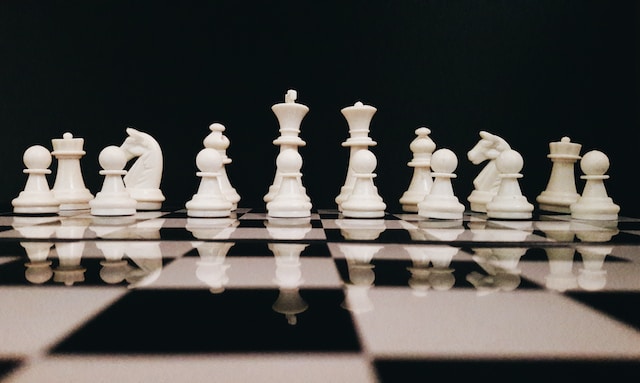When it comes to playing chess, visualization is a key skill that sets apart the amateurs from the masters. The ability to see the board in your mind’s eye, calculating moves and predicting outcomes, is a powerful tool that can lead to victory.
If you’re wondering how to improve your chess visualization skills and gain a competitive edge, you’ve come to the right place. In this article, we will explore unique and effective strategies that will help you enhance your mental imagery, elevate your game, and outmaneuver your opponents.
Can I train my brain to “see” the chessboard?
Absolutely! Just like any other skill, chess visualization can be trained and developed over time. By consistently engaging in exercises and techniques specifically designed to enhance your mental imagery, you can sharpen your ability to “see” the chessboard in your mind’s eye. With practice, you’ll be able to visualize different positions, anticipate moves, and strategize more effectively.
What exercises can boost my chess visualization skills?
There are several exercises that can help improve your chess visualization skills. One effective exercise is solving chess puzzles or studying annotated games, where you try to visualize the moves and variations without physically moving the pieces.
Another exercise involves playing blindfold chess, either against an opponent or simply by visualizing the moves on an empty board. Additionally, practicing visualization drills, such as mentally moving pieces to different squares or envisioning different combinations, can significantly enhance your ability to “see” the chessboard.
How does visualization affect my overall chess performance?

Visualization plays a crucial role in your overall chess performance. By honing your ability to mentally simulate moves and positions, you can effectively plan ahead, foresee potential threats, and anticipate your opponent’s strategies.
Visualization enhances your calculation skills, enabling you to evaluate different lines of play and make more informed decisions. It also helps you develop a deeper understanding of the game, improving your tactical awareness and overall chess intuition.
Are there specific visualization techniques used by chess grandmasters?
Yes, chess grandmasters employ specific visualization techniques to enhance their gameplay. One technique is creating mental images of the entire chessboard, visualizing each piece’s location and the relationships between them. Grandmasters also use visualization to calculate move sequences and anticipate potential outcomes.
They develop the ability to mentally project the board into the future and assess various positions. By practicing these visualization techniques, you can elevate your chess skills and start thinking like a grandmaster.
How can I improve my ability to calculate moves in advance?
Improving your ability to calculate moves in advance requires a combination of visualization and analytical thinking. Start by breaking down complex positions into smaller, manageable parts. Visualize possible move sequences, considering different branches and variations.
Gradually increase the depth and complexity of your calculations. Regularly solving chess puzzles and analyzing master games can also help improve your calculation skills. With practice, you’ll become more proficient at predicting and evaluating moves, giving you a significant edge in your chess games.
What role does pattern recognition play in chess visualization?
Pattern recognition is a fundamental aspect of chess visualization. By recognizing recurring patterns and motifs, you can quickly identify familiar positions and formulate effective plans. Patterns can involve specific piece configurations, tactical themes, or strategic setups.
Developing a keen eye for patterns allows you to anticipate moves, understand typical pawn structures, and find tactical opportunities. As you gain experience and exposure to various chess positions, your pattern recognition skills will improve, enabling you to make more intuitive decisions on the board.
Can meditation and mindfulness practices enhance my visualization skills?
Absolutely! Meditation and mindfulness practices can greatly enhance your visualization skills in chess. By training your mind to focus and quiet the mental chatter, you can improve your ability to visualize the chessboard more clearly and vividly.
Meditation also helps enhance your concentration, allowing you to maintain focus during long games or critical moments. By incorporating mindfulness into your chess practice, you’ll develop a deeper connection with the game, improving your overall awareness and visualization abilities.
Are there any recommended visualization apps or tools for chess players?
Yes, there are several recommended visualization apps and tools available for chess players. Chess.com offers a “Vision Trainer” feature that helps improve visualization skills by testing your ability to remember and reproduce positions on the board. ChessBase, a popular chess database software, allows you to study annotated games and practice visualizing moves and variations.
Additionally, there are chess puzzle apps like “Chess Tactics Pro” and “Chessimo” that provide challenging puzzles to enhance your visualization and calculation abilities. Exploring these tools can provide valuable practice and feedback to boost your chess visualization skills.
How can I use visualization to anticipate my opponent’s moves?
Visualization is a powerful tool that can help you anticipate your opponent’s moves in chess. By immersing yourself in the game mentally and visualizing different scenarios, you can gain insight into your opponent’s potential strategies and tactics.
By studying their past games and analyzing their playing style, you can develop a mental model of their decision-making process. This allows you to predict their likely moves and develop countermeasures in advance. Visualization gives you an edge by enabling you to stay one step ahead and make more informed decisions during the game.
Is there a correlation between chess visualization and creativity?
Yes, there is a strong correlation between chess visualization and creativity. Visualization in chess involves imagining different moves, combinations, and positional ideas. It requires thinking outside the box and exploring unconventional strategies.
Developing strong visualization skills not only enhances your analytical abilities but also stimulates your creative thinking. By visualizing unique and imaginative possibilities on the chessboard, you can surprise your opponents, unleash creative maneuvers, and find innovative solutions to complex positions.
How can I incorporate visualization into my chess training routine?

Incorporating visualization into your chess training routine is essential for improving your skills. Start by setting aside dedicated practice sessions where you focus solely on visualizing the chessboard and its pieces. Begin with simpler positions and gradually progress to more complex scenarios.
Use visualization exercises like mentally playing through entire games or predicting moves in annotated positions. Incorporate visualization drills into your regular chess study sessions and make it a habit to visualize moves and variations before physically moving the pieces. Consistent practice will strengthen your visualization abilities over time.
Are there any common mistakes to avoid when visualizing chess positions?
While visualizing chess positions, it’s important to be aware of common mistakes that can hinder your progress. One common mistake is rushing through the visualization process without giving enough time for mental calculation and analysis. Another mistake is relying too heavily on memory instead of actively visualizing the board in real time.
Avoid the temptation to move the pieces physically while visualizing, as it undermines the purpose of mental imagery. Lastly, beware of fixating on one line of play and neglecting to explore alternative moves and variations. By staying mindful of these common mistakes, you can enhance the effectiveness of your visualization practice.
What are the benefits of developing strong chess visualization skills?
Developing strong chess visualization skills offers a multitude of benefits. Firstly, it improves your overall calculation abilities, enabling you to evaluate different move sequences and anticipate potential outcomes. Enhanced visualization allows you to efficiently plan and strategize, saving valuable time during critical moments.
Additionally, visualization enhances your pattern recognition skills, enabling you to quickly identify familiar positions and spot tactical opportunities. Strong visualization skills also contribute to better focus, concentration, and decision-making, leading to improved performance in both rapid calculations and long-term positional understanding.
Can visualization help me overcome chess-related anxiety or stress?

Yes, visualization can be a valuable tool in overcoming chess-related anxiety or stress. By visualizing yourself in calm and confident states during your games, you can reduce anxiety and enhance your mental resilience. Imagine yourself making accurate calculations, finding creative solutions, and executing successful strategies.
Visualization allows you to mentally rehearse challenging situations, boosting your confidence and reducing stress levels. By incorporating visualization techniques into your pre-game routine, you can enter each game with a positive mindset and a greater sense of composure.
How long does it take to see improvement in chess visualization with consistent practice?
| Methods | Benefits | Challenges |
|---|---|---|
| Chess Puzzle Solving |
|
|
| Blindfold Chess |
|
|
| Visualization Drills |
|
|
| Studying Annotated Games |
|
|
| Visualization Apps/Tools |
|
|
The time it takes to see improvement in chess visualization varies from individual to individual. Consistent practice is key to progress. With regular and focused visualization exercises, you can start noticing improvements in your mental imagery within a few weeks or months.
However, the rate of progress depends on factors such as your starting level, dedication to practice, and the complexity of the positions you engage with.
Remember, developing strong visualization skills is a continuous process that requires ongoing commitment and refinement. With patience and perseverance, you’ll steadily witness significant improvements in your chess visualization abilities over time.
Wrap-up
In conclusion, mastering chess visualization is a transformative journey that can elevate your gameplay to new heights. By training your mind’s eye to see the chessboard, anticipate moves, and calculate variations, you gain a powerful advantage over your opponents. Incorporating visualization into your chess training routine, avoiding common mistakes, and practicing consistently will help you sharpen your skills.
Strong chess visualization skills not only enhance your analytical abilities but also stimulate creativity and unlock your strategic potential. Moreover, visualization can assist in managing chess-related anxiety and stress, fostering a calm and focused mindset during games.
Remember, progress in visualization may vary, but with dedication and perseverance, you will witness improvement and reap the benefits of this essential skill. So, embark on this journey of mental imagery, and let your visualization prowess guide you towards chess mastery.




